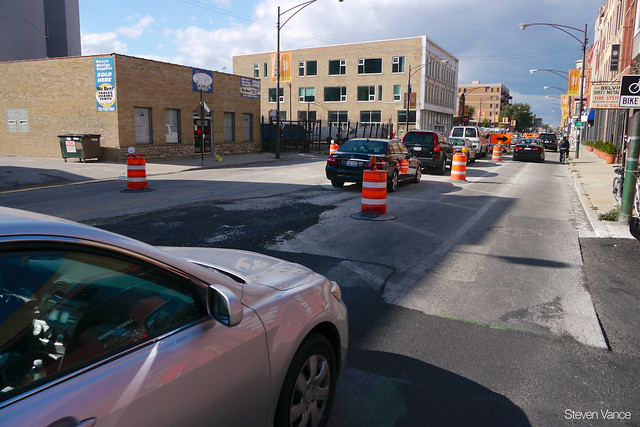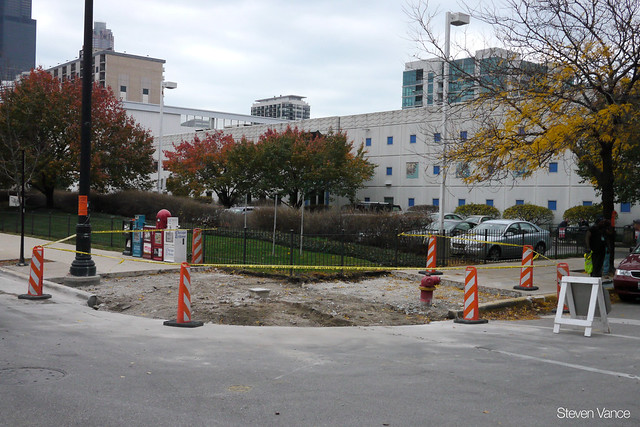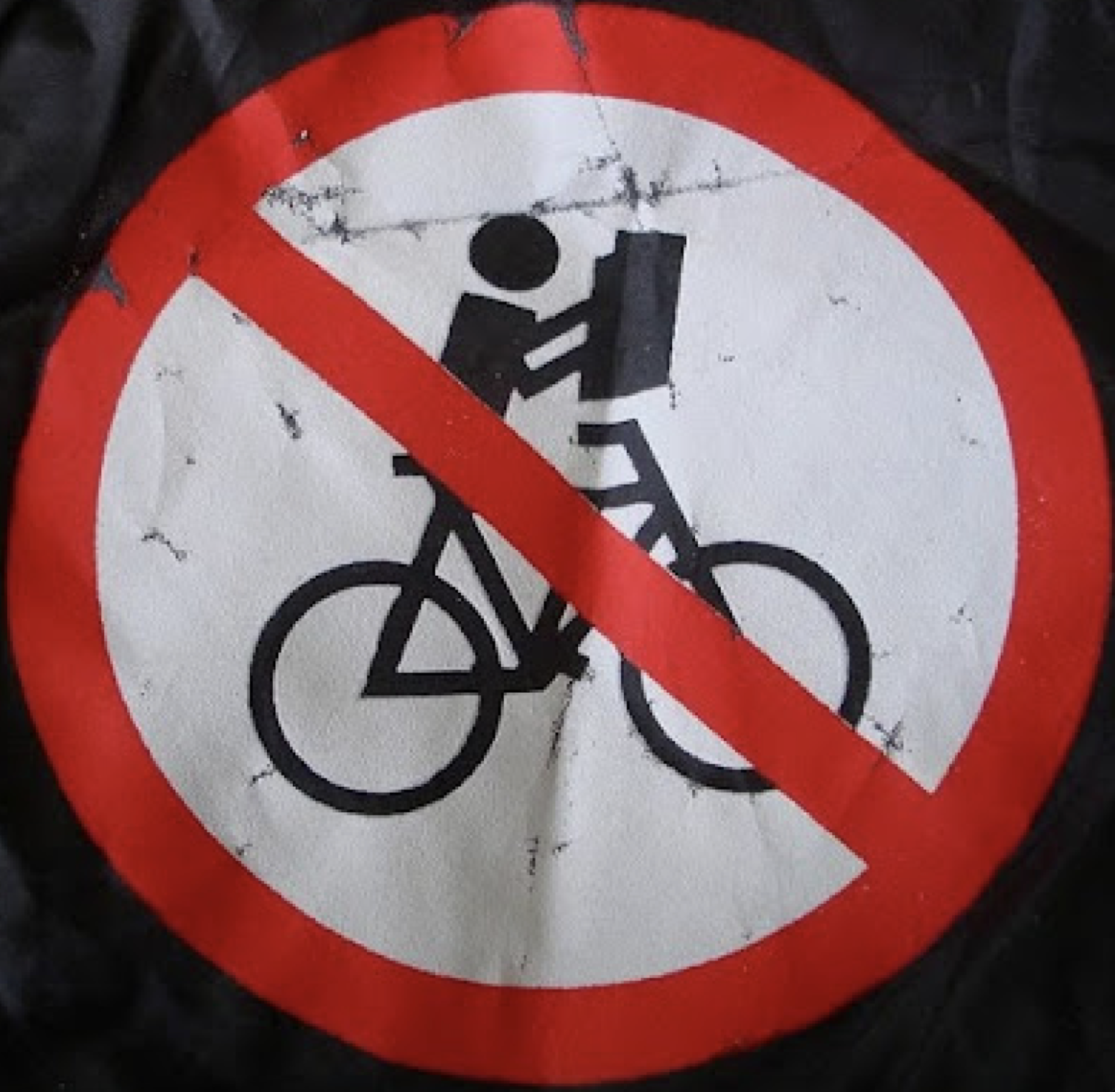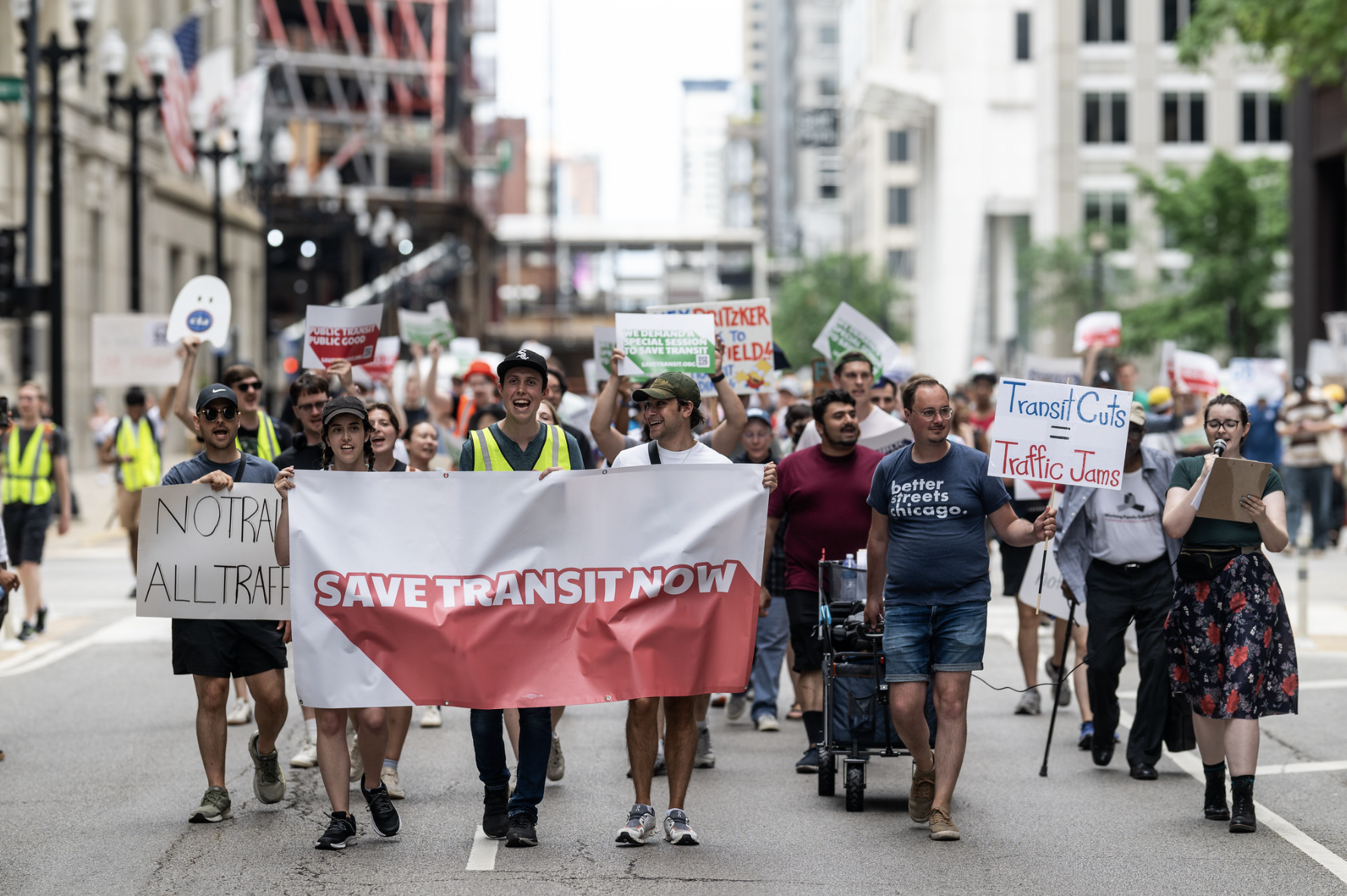The Chicago Department of Transportation is accepting public comments until 5 p.m. today on the draft update to "Rules and Regulations for Construction in the Public Way" [PDF]. Among other things, this document can help improve safety for biking and walking by creating better conditions during street construction projects.
If the city's proposed rules were in place today, for instance, the construction site over the bike lane on Milwaukee Avenue between Ogden Avenue and Erie Street probably wouldn't be so abysmal for bicycling. This document is a big improvement over the existing rules, but there are a few ways the provisions to maintain walking and biking paths could be stronger.
The draft includes rules to accommodate people walking and biking that don't exist now. For example, bike racks in the construction zone must be removed and returned, bikeway markings must be restored within seven days (no timeline was given before), many crosswalks that are now two stripes must be restored as more visible zebra crosswalks. And, for the first time, bicyclists and pedestrians are specifically mentioned as groups that require safe accommodation. The existing infrastructure for biking and walking should not be disrupted – language that doesn't exist now. Additionally, the draft rules require a traffic control and detour plan to make a safe walking path to bus stops and train stations.
The existing rules only mention bicycling once -- to say that bike lane markings must be restored. This shows at the construction work on Milwaukee Avenue. The new protected bike lane -- installed this past summer on the city's busiest cycling street -- is closed due to a water main project, and cyclists share a narrow lane with automobiles in both directions. Cuts were made in the street and covered with lumpy asphalt, gravel, and slippery metal plates. Safely accommodating cyclists as required by the new rules should lead to better conditions during projects like this.
Still, the draft requirements for good bicycle and pedestrian accommodations and detours can be strengthened. Section 4.3 says, "[Traffic Control Plan] and Detour plan drawings shall meet the standards defined in this Manual, the IDOT Highway Standards and the MUTCD whichever is more stringent." While the federal MUTCD manual does require "alternate routes to be provided" when pedestrian or bicycle facilities are disrupted, Chicago's document should explicitly be the most stringent so that CDOT has the utmost control.
The same section requires "adequate facilities for drivers to maneuver safely through the construction area, day or night, and varying weather conditions" but not for people walking and biking. And it says that construction projects must "provide the capacity necessary to maintain an acceptable level-of-service for the traveling public" but again doesn't require the same guarantee for walking and biking. This goes against the spirit of the department's Complete Streets Design Guidelines, which place pedestrians atop the modal hierarchy.
Facilitating vehicular level-of-service often means giving bicyclists and pedestrians leftover space, closing sidewalks mid-block and at intersections, or closing bike lanes. There are better ways to handle street construction at a time when we are trying to increase the number of people who walk, bike, and take transit.
A couple of other points that could be improved:
- When a cut into the roadway is made, CDOT requires an "asphalt restoration agreement" for certain scenarios, but not when a bikeway is cut. As many bicyclists know, the repaving after a cut is often still hazardous to bicycling, with either the rough concrete or lumpy asphalt replacements. (section 3.4.5a)
- Many organizations, like Special Service Areas and universities, own infrastructure legally in the public way, but the draft update only makes provisions to protect city-owned bike racks and bus shelters owned by JCDecaux. The Wicker Park-Bucktown, Lakeview, and Uptown SSAs have installed many of their own bike racks and there are a handful of bus shelters installed by organizations other than JCDecaux. (section 4.2.10)
To submit a comment today, read the instructions on CDOT's website.







